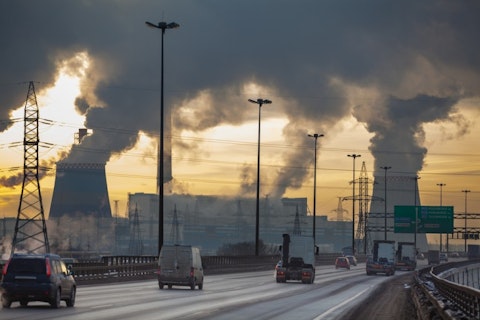These 8 countries that produce the most acid rain in the world should really think about the environment they will leave for the generations to come. Acid rains are very dangerous and they have long-term consequences for humans and wildlife.
It is thought that the acid rain dates back to the end of 19th century. Although it is commonly known as “acid rain”, this title refers to fog, snow, sleet and rain that contain acid in higher amounts than normal. The main causes of acid rains are chemical compounds sulfur dioxide and nitrogen oxide. These two chemical compounds can be produced by nature (lightning, volcano eruptions) but they are mostly caused by human activity such as electricity generation, factories (iron and steel production), utility plants and motor vehicles.
Sulfur dioxide and nitrogen oxide react with water molecules in the air, thus creating acid rain. There are some cases when these chemical compounds end up in a dry area. In this case, they get mixed with the dust and fall to the ground. Although they are not a dangerous as acid rain, they still affect the environment.
One of the major issues is the fact that sulfur dioxide and nitrogen oxide are not immediately converted into acid rain. They can sometimes travel for hundreds or thousands miles before reacting with water and causing acid rain. This is why the pollution in one country can lead to acid rain in another country. For example, the acid rain in Sweden and Scandinavia is caused by the air pollution in Great Britain. Also, Canada’s acid rain isn’t caused by its air pollution, but by air pollution coming from the United States of America.

Kekyalyaynen / Shutterstock.com
Acid rain can affect everything, from humans to buildings, trees, and wildlife. According to Monica Butnariu and Ionel Samfira in their “Consequences of Acid Rain”, “acid rain can cause direct consequences to humans, including respiratory problems, headache and eye irritation. The indirect consequences are the consummation of fruits, vegetables, and meat that contains mercury released by acid rain and absorbed by vegetation and animals.” When it falls onto the ground, acid rain removes the nutrients in soil and releases toxic elements like aluminum that is absorbed into the vegetation through roots. (Speaking of aluminum, don’t forget to check our article on 8 countries that produce the most aluminum in the world.)
Acid rains especially have a disastrous effect on aquatic life in lakes, rivers, and streams. It changes the ecosystem by bringing aluminum to the water, affecting the aquatic life like fishes. It endangers reproduction and contaminates the fish that can be dangerous for humans to eat. The effects of acid rains can also be seen in the oceans when the rivers flow in bringing toxic elements.
Currently, there are no data that show how much acid rain is produced by each country, so for our list of 8 countries that produce the most acid rain in the world, we had to take a different approach. Since the majority of sulfur dioxide and nitrogen oxide is released by motor vehicles, factories, and power plants, we started from there. We took a list from WHO (World Health Organization) that shows the number of registered vehicles per country, which can be an excellent indicator of the number of motor vehicles operating in the particular country. We also checked the countries that produce the most iron (data provided by U.S. Geological Survey) and steel (data provided by World Steel), since these production processes also contribute greatly to acid rains. Finally, we took the countries that have the most nuclear power plants (data provided by Euro Nuclear) and the most coal consumption (data provided by U.S. Energy Information Administration). From each of these lists, we took top 10 ranked countries and assigned them with points from 1 to 10. After we had summed up the scores into our Acid Rain Score, we obtained a clear picture about the biggest acid rain producers in the world. Let’s check them out!





